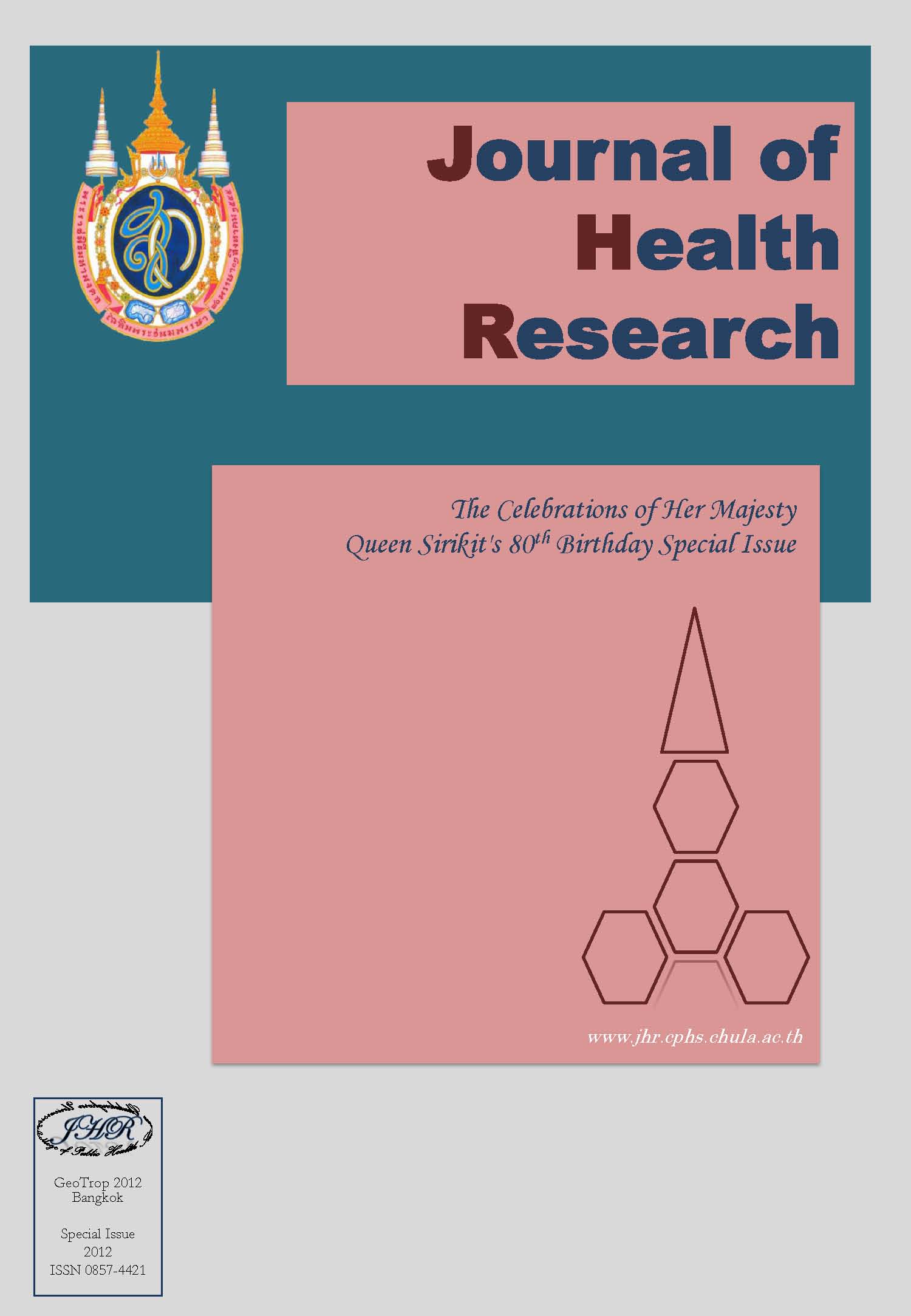Respiratory Symptom And Illness Prevalence In Mothers, In Relation To Biomass Cooking Fuel Use In Mandalay, Myanmar
Keywords:
respiratory symptom, respiratory, prevalence, biomass fuel, Mandalay, MyanmarAbstract
A cross-sectional study was conducted with the purpose of ascertaining the association between biomass cooking fuel use and prevalence of respiratory symptoms and illnesses in mothers in Mandalay, Myanmar. To the best of our knowledge, this is the first study that directly assesses respiratory effects of biomass fuel use in Myanmar. The study was conducted in 425 households, using a standardized, interviewer-administered questionnaire. All households had at least one child under 5 years old. Prevalences of respiratory symptoms and illnesses in these children's mothers (or female guardians) were measured and assessed in relation to biomass fuel use. Specific outcomes were cough with or without cold, phlegm with or without cold, wheeze, shortness of breath when hurrying on level ground, cold with cough in past 12 months, and doctor-diagnosed asthma. In addition to biomass fuel use, other independent variables were included such as other cooking-related variables, household environmental characteristics, and socio-demographic characteristics, totally 19 independent variables. Associations of categorical and continuous variables with respiratory outcome prevalences were measured by using chi-square tests and logistic regression, respectively. Each independent variable was assessed separately (bivariate analysis). More than half of the households (64.2%) used biomass fuel as their main cooking fuel. Prevalence of respiratory problems in mothers were statistically significantly associated with biomass fuel use (p<0.05). Mothers who use biomass fuel as their main cooking fuel had 3.2 times more chance to get cough, 3.9 times more occur to have phlegm, 7.3 times more experience to have wheeze, 10.6 times more chance to suffer from shortness of breath, 4.4 times more chance to have cold with cough in past 12 months and 7.2 times more opportunity to acquire asthma than who don’t use. Therefore, this study strongly suggested that biomass fuel use is a risk factor for human respiratory health. It is likely that reduction of household biomass fuel use would improve respiratory health in Mandalay, Myanmar.







